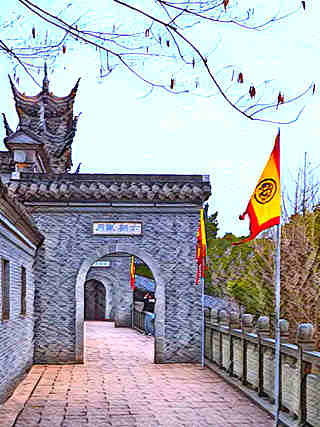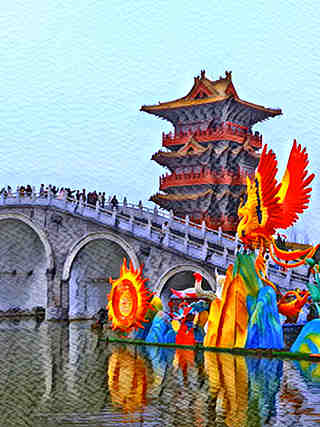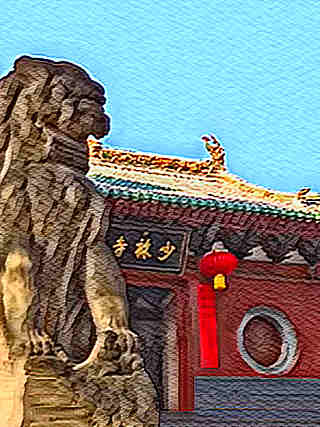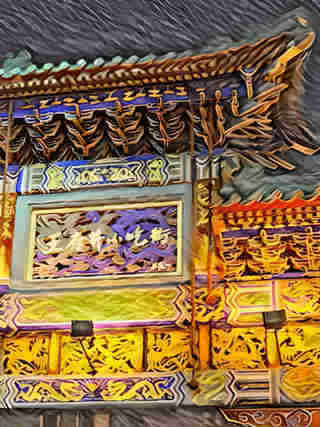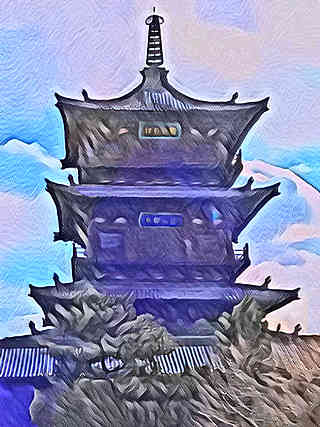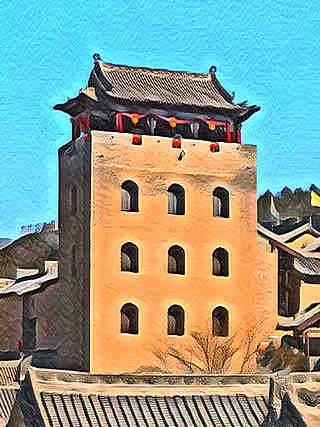Walk in Yangzhou City – Jiangsu, China
Yangzhou City (扬州市) is a city located on the north bank of the Yangtze River in Jiangsu Province, East China.
To the south, it borders the city of Zhenjiang, located on the other side of the river.
The city was known by various names in ancient times and was first called Yangzhou in 589.
Yangzhou has a long history and is one of the first 24 famous historical and cultural cities in China. It has a history of more than 2,500 years.
Yangzhou City is a national important historical and cultural city, internationally renowned cultural tourism destination. It has the reputation of “the first city of Chinese canals”. The Yangzhou section of the Grand Canal of China was inscribed on the World Heritage List.
Yangzhou’s legacy as a hub of refined culture is best experienced in its classical gardens.
The Ge Garden (个园), famous for its artistic use of bamboo and rock formations, represents the four seasons through its carefully curated landscape.
Meanwhile, the He Garden (何园), a stunning Qing Dynasty (清朝) mansion, offers a glimpse into the lavish lifestyle of Yangzhou’s wealthy merchants, with its intricate wood carvings, winding corridors, and private courtyards.
Strolling through Slender West Lake (瘦西湖), visitors are greeted by a landscape that seems straight out of a traditional Chinese painting.
Unlike its grander counterpart in Hangzhou (杭州), Slender West Lake is known for its delicate beauty, with arched bridges, willow-lined banks, and elegant pavilions dotting its shores.
The iconic Five Pavilion Bridge (五亭桥), with its golden-tiled rooftops, reflects gracefully in the water, creating a scene that has inspired poets and artists for centuries.
Nearby, the White Pagoda (白塔) stands as a symbol of the city’s historic connection to Buddhism and maritime trade.
Daming Temple (大明寺) is a Buddhist temple located in the center of Yangzhou City.
The temple was named after its construction during the Daming period (457-464) of Emperor Xiaowu of the Southern Song Dynasty. Its name has changed over the past 1,500 years. 1980, Daming Temple to restore the original name.
In 2002, it was rated as a national AAAA level scenic spot.
In the first year of Renshou in the Sui dynasty (601), Emperor Wen Yang Jian issued an edict to build thirty pagodas to be erected in thirty prefectures across the country to worship Buddhist relics (佛骨) to celebrate his birthday.
One of them was built in Daming Temple, called the “Qiling Pagoda”. The magnificent tower had nine floors and was known as “China’s most magnificent and special architecture”.
This temple is known for a famous monk, Jianzhen, who studied the sutras and initiated people into monkhood here in 742 AD before he left for Japan.
Chapters:
00:00 Dongguan Street (东关街)
24:26 Dongguan City Gate (东关城门)
27:28 Ge Garden (个园)
45:31 He Garden (何园)
1:09:13 Slender West Lake (瘦西湖)
1:24:30 Twenty-Four Bridge (二十四桥)
1:36:44 Plum Forest on the Lake (湖上梅林)
1:44:48 Daming Temple (大明寺)
Video Source: Yangzhou, Jiangsu🇨🇳 China’s Ancient Capital of Wealth & Luxury! (4K HDR) from DuckTravel on Youtube ⁄ CC BY

